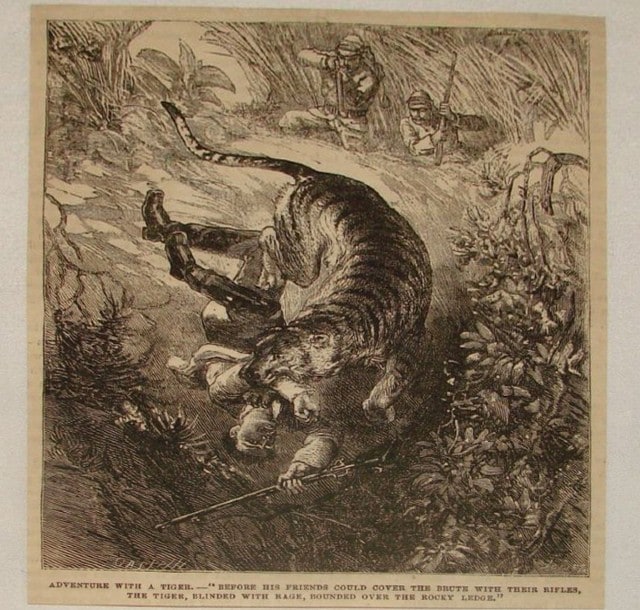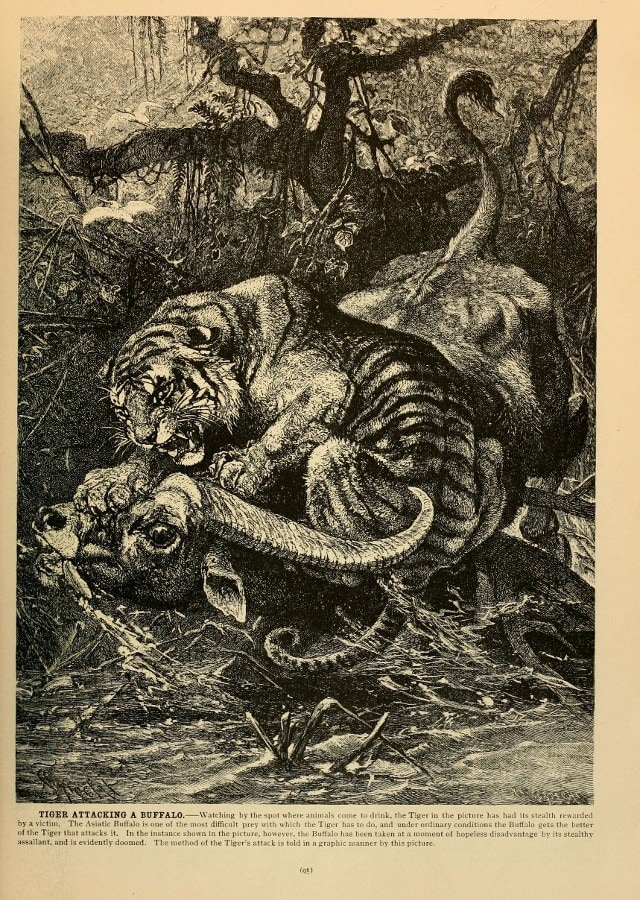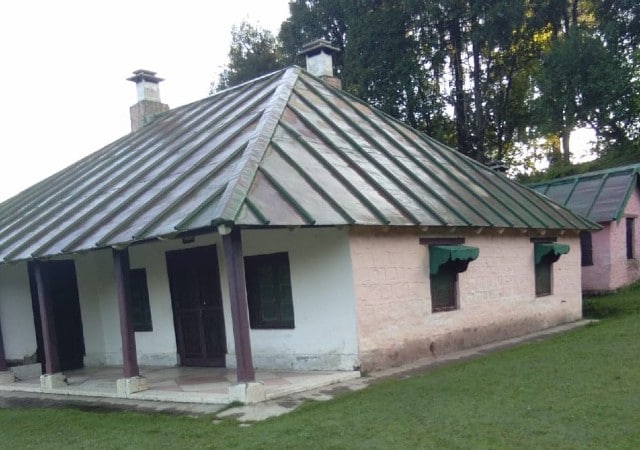History takes little note of maneater tigress of Mundali but hers was a terror rule of 13 years in Chakrata hills
History takes little note of maneater tigress of Mundali but hers was a terror rule of 13 years in Chakrata hills

The first man-eater tigress of the Indian Himalayas, which created news in international publications in the 1880s, has unfortunately faded away from public memory. Long before British hunter, naturalist and author Jim Corbett became active in Garhwal and Kumaon hills-killing many ferocious man-eaters — a feline was operating in Chakrata hills of Dehradun. The man-eater killed countless people and remained elusive for 13 long years. The local government announced a reward of Rs 500 for gunning down the dangerous tigress at that time.
Alike the Champawat, Rudraprayag, and Panera maneaters, the tigress of Mundali (near Chakrat) terrorised the locals for over a decade. While the Champawat maneater tiger killed 436 deaths in Nepal and the Kumaon division from the 1890s to the early part of the 20th century. The maneater leopard of Rudraprayag killed 125 persons from 1918 to 1926 and the Panar man-eater was estimated to have killed about 400 persons in the early 20th century. Legendary Jim Corbett gunned down all three man-eaters.

A young forest officer Bertram Beresford Osmaston, who had reached barely three months back in India from England, created ripples by killing the maneater of Mundali in a complicated situation in 1889. Though the actual number of kills made by the tigress of Mundali, 40 kilometres from Chakrata, remains unknown, but it was estimated that the tigress killed many people during her 13 years odd terror rule. However, the case of Mundali tigress is a little different and leaving 1889 and 1890, little got published about the tigress.
As Kundan Chauhan, a resident of village Lokhandi in Chakrata, says, “Never heard about any maneater operating in Mundali. The place is known for its forest Chowki and guest house. It is considered as an ideal destination for skiing. In summer, animal grazers visit Mundali with their domestic animals.” Sharing similar information, writer Laxmi Kant Joshi, a resident of Ninus village near Mundali, says, “We have heard about leopards attacking domestic animals, but never about tigers dwelling in our forest. The Mundali forest guest house was constructed way back in 1872, it is a good picnic spot.”
The most famous incident related to the maneater of Mundali is using a forester as a toy for her cubs. The tigress picked a forester from a hut and offered him to her cubs for fun and frolic. When the man made an attempt to run away, the tigress captured the forester again and joined the gambols of her young ones. This was repeated again and again, till the forester fainted. The feline was famous for her killing pattern, cunningness and moving in high altitude areas during summer and retiring to lower altitude (5,000 to 10,000 feet) in winters. In another incident, the tigress entered a log house where 18 men were sleeping. She picked one of them without awaking the others.
The maneater tigress made its first appearance in 1876 and four years later killed three villagers at Deoband, near Chaktara, to affect normal life. A special operation was launched and her three cubs were eliminated but the tigress remains untraceable. The maneater used to move long distances after making the kill, over 20 miles in one day, to keep the Shikaris guessing and confused.
In May 1889, Bertram Beresford Osmaston (famous as ‘BB’) was touring with forest school students (Dehradun) in Mundali. The maneater killed a buffalo near their camp and BB and a forest student W Hearsay decided to sit on a ‘Machan’ near the kill. In the afternoon a man informed them about hearing a heavy sound of some animal moving near the river (probably Dangata Gadhera). On getting the tip, both BB and Hearsay decided to search for the tigress. Both were moving close to each other by maintaining a gap of about 30 yards. Suddenly a drastic incident took place!

On the 12 May 1889 incident, BB Osmaston records, “Suddenly I heard a thud, followed by a series of short, snappish, angry growls, and at the same moment I heard groans and cry for help from Hansard, crushed to the ground by the tigress, and struggling, face downward, to get free. The tigress appeared to be tearing his face and neck with her claws. As quickly as I could I leveled the 12-bore at the brute, and, although I was very much afraid of hitting Hansard, I knew it was the poor fellow’s last chance. So I pulled the trigger, and to my relief saw the brute relax her hold and come rolling down the precipitous slope, which ended in a 15-foot drop, nearly sheer.”
BB narrated the incident in a detailed report published in the Indian Forester (Volume-XV, 1889). After the first, BB took a second shot at the tigress to close the chapter of the tigress of Mundali. Immediately after firing the final shot, Osmaston began searching Hansard and failed to find him. He rushed to the forest Chowki for help and later found the dead tigress and heavy mauled Hansard near the river.
The elimination of the maneater of Mundali got published in many international publications, including in England, China, USA, Japan to mention a few. The Bombay Natural History Society, in its 1889 report (Volume-IV) writes about the Mundali tigress, “Reports make her out to be a man-killer of at least ten year’s standing. Her skin was not mangy but a very fair one. The cold climate might, of course, give her good skin. Her teeth were exceptionally bad. Of her four canines none was sound, and the two upper ones were worn and broken down to about half their original length.”
The tigress was 8 feet 8 inches long. Injured Hansard was rushed to the Mundali forest Chowki for treatment and after some days was moved to Military Hospital in Chakrata. Later he was sent to Mussoorie for advanced medical care where he recovered completely to lead a healthy life.

There is no information about the presence of tigers in Chakrata in the present times. Leopards are found in many places in Chakrata, famous for its cool weather and picturesque locations, and its adjoining areas. The maneater of Mundali also proves that over a century back tigers used to roam freely in Chakrata forest. Even GRC Williams in his 1874 published book Historical and Statistical Memoir Of Dehra Doon mentions about existence of tigers in Jaunsar. In those times a reward of Rs 10 was provided for killing tigers, Rs 5 each for every leopard and bear. Offering a reward of Rs 500 for killing a tigress, when the normal prize was Rs 10, also proves how dangerous the man-eater of Mundali.
Tiger sightings are high in Dehradun and Haridwar areas of the Rajaji Tiger Reserve. But, in Chakrata area no such record exists and a few years back a tigress with her cubs were seen at Timli — about 77 kms from Chakrata. Timli is located closer to Dehradun.

Recalling it, retired forest ranger Mahaveer Rawat says, “We were on night patrol and moving on the Yamunotri-Delhi highway in January 2015, and saw a tigress with three cubs crossing the road. As the forest staff attempted to photograph the tigress with her cub, the jungle cat disappeared. After that incident, camera traps were fixed on various places in Timli but till date no photographic and digital evidence of tiger presence were recorded in the digital devices.”
Tigers used to move freely and roar in Chakrata forest in the past and the cases of maneater of Mundali prove this.
Read all the Latest News, Trending News, Cricket News, Bollywood News,
India News and Entertainment News here. Follow us on Facebook, Twitter and Instagram.
What's Your Reaction?


























































